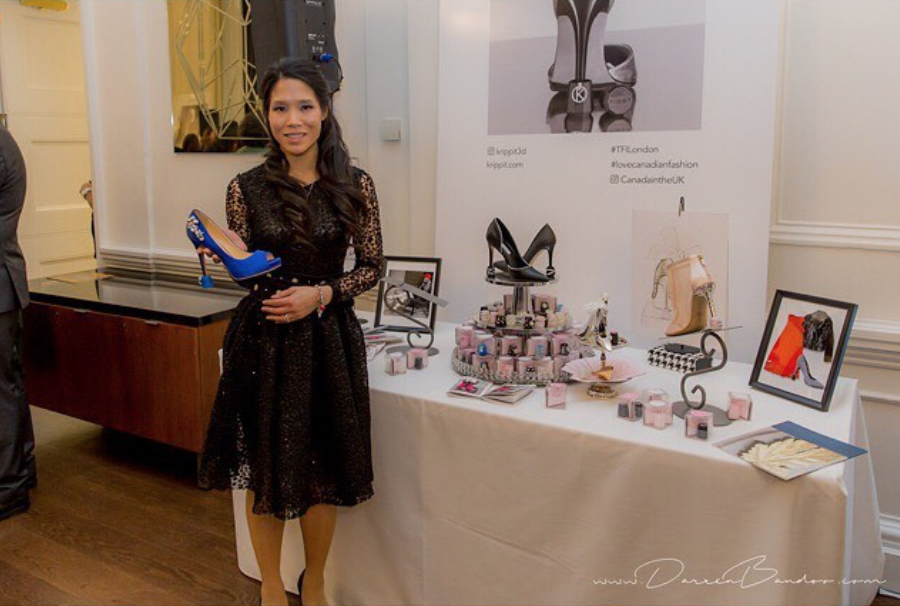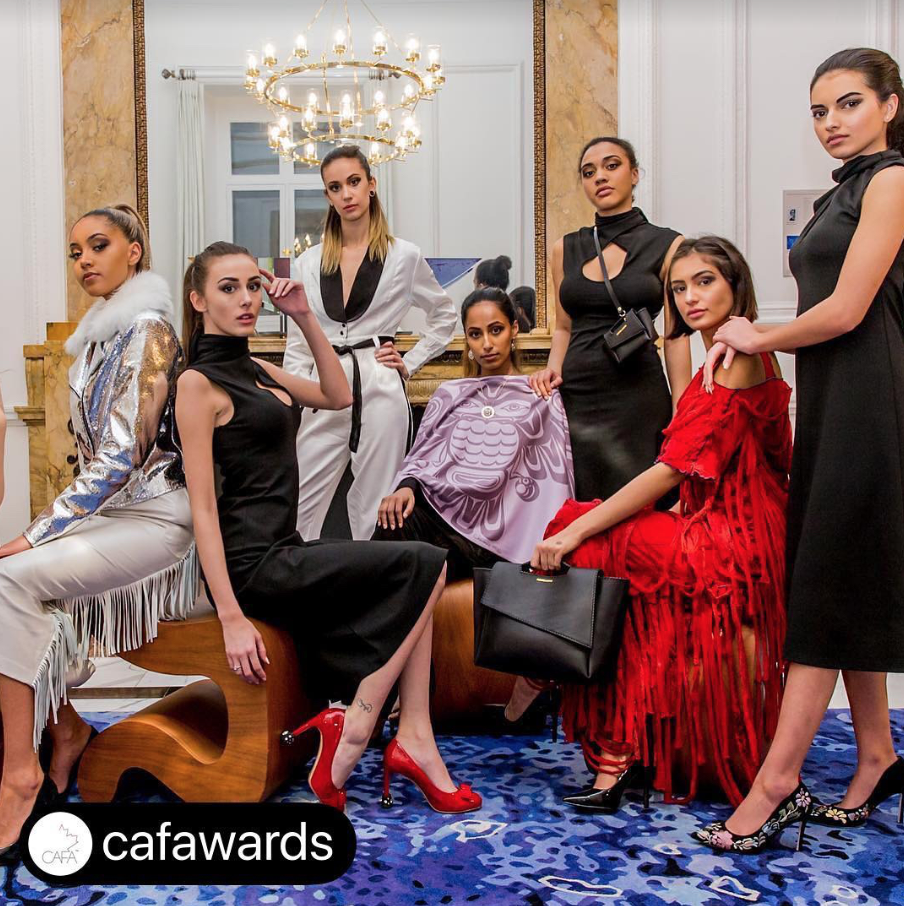WoW Woman in FashionTech and 3D Printing | Melissa Chung, founder and CEO of krippit
Interview by Marija Butkovic @MarijaButkovic
Melissa’s career has been focused on investment management, with an emphasis on high-net-worth clients. She is particularly effective in gathering client information, analyzing economic and business data and trends, and providing astute recommendations based on each client’s risk profile. Her knowledge of financial operations comes from a breadth of experience that includes big banks, mid-size boutique firms, and independent firms. She’s worked with pension plans, private equity, and portfolios of all sizes. From a young age, she watched her family’s business gain market share despite competing with global firms, and she learned first-hand how to maintain a competitive edge and deliver outstanding, customized service.
As a small business owner, she’s learned how to make quick decisions and adapt to customers’ needs—eventually landing the Microsoft and VIA Rail pension plans. She helped raise $2M of private funding and secured million-dollar consumer packing contracts with Fortune 500 companies including Motorola Mobile and Coca Cola. Outside of work, she’s been involved for several years with the Learning Disabilities Association of York Region, currently serving as their President.
Melissa, how did you get into fashion tech?
I’ve always loved fashion, and I became fascinated with the tech industry while I was taking my MBA at Cornell University. It was natural to combine innovation and 3D-printing into what has now become my business.
What is the idea behind krippit and how did you come up with it?
It was an early memory of my mother, when I was just six years old, who was picking us up after work from school. She held groceries in one arm while holding my brother’s hand in the other, by the time I ran across the street, she had taken a fall because her heels got caught in the sewer grates. The injury kept her away from work for three days.
High heel related emergency room visits doubled over the last decade. Later on, I was at a friend’s outdoor wedding, and they had made heel protectors available to guests who were struggling to walk in the grass without sinking. I was intrigued by the devices, but immediately saw that improvements could be made to the design. I took a few home to study further and over time came up with my own 3D printed design, which is now what we know as Krippit!
When did you start with that business, how did you start and do you have other members in your team?
I started krippit with my business school classmate Julie Belleza, who is a software engineer and was instrumental in the design and prototyping with 3D printers. During the summer of 2017, we managed to gain validation of our initial prototypes from Founder Institute’s accelerator program in Toronto as well as Woodbine entertainment Group’s Queen’s Plate event (one of North America’s biggest horse races).
We currently have one full time employee Jasmine, who started out as a co-op graphic – Arts and design student from Ryerson. Our other two part-time employees one from George Brown and the other for OCAD. We feel grateful and fortunate to have a fantastic team of interns growing and learning with us and of course our vendor partners and other collaborators in various industries.
How long did it take you to be where you are now?
It’s taken a few years and over 1000 customer surveys to prototype and to establish a sustainable hybrid manufacturing solution that would bridge the gap between prototyping and final commercialization including manufacturing of our final molds.
What was the biggest obstacle?
There are a lot of steps to manufacturing a product, between securing patents, creating a design that works, getting to the point of mass production, which requires a lot of capital, as well as securing vendor relationships to get the product out there. It’s been a challenging undertaking, but an exciting one!
What are the challenges of being an entrepreneur in the niche you are in? How about being a female founder / entrepreneur?
Securing funding is a huge challenge for many female entrepreneurs. Funding has historically been kept within small, male dominated circles. It’s been great to see more women in this sphere creating opportunities for founders like myself, and I hope to one day be able to do the same for a female led start up. I hope more, however, that by then, funding will be more equitably distributed, and it won’t be an issue anymore! But until then, it’s important for all of us to support each other’s ventures to secure the future for more female founders everywhere.
What are your biggest achievements to date?
I would say getting to London Fashion Week is a big one! We’ve also secured some great partnerships with vendors. But most of all, I’m proud of our krippit and our innovative design that keeps both heels and their wearers safe, secure and confident with every step.
What are your projects you are currently working on?
Throughout our customer discovery and market research, we’ve discovered several other ways to help women feel safe, secure and confident in their heels. Stay tuned for more from krippit.
Is #WomenInTech movement important to you and if yes, why?
As a historically male dominated field, it’s important to me to not only be a part of the growing population of women in tech, but to encourage young girls and women alike to be interested and explore fields in STEM. We need more female minds in the field to ensure women’s needs are being met with new innovations and products, and to continue to make the world a more balanced and equitable place.
What will be the key trends in the fashion tech and wearable tech industry in the next 5 years and where do you see it heading?
There are two areas in FashionTech that I believe will experience changes:
3D-printing, being widely used on a commercial level.
IoT devices, which can leverage from AIPs to larger data-based centres.
3D-printing: With brands promoting B2C sales of 3D printed goods, not only will customers be able to order and try products “on demand” bases, but by doing so, more local jobs could be created, without having to rely on imports.
For instance, during my travels to Fashion week, I saw many buyers being told that
More samples are available at the brands head offices. However, rather than wait for shipped samples, leveraging 3D tech to print physical samples for buyers on the spot will also help deal-flow to close faster. Companies are typically able to reduce amount of physical sampling by 10% saving millions of dollars per year.
Prior to krippit, I was on a team that worked on a motorcycle airbag jacket. Ahead of the curve with safety being a huge concern, having sensors that track the jacket’s battery level, so that it would deploy upon impact and trigger a signal to a call centre that would issue out an emergency dispatch based on the geo-location tracker in the jacket. We used off patented military grade material to shell the deployable vest.
What is the most important piece of advice you can give to all female founders and female entrepreneurs out there?
Learn to love feedback and critique – “bring it on” the more you get attacked the more you find answers and solutions to solve those challenges.
Team: hire a team that compliment your own skill set.
It’s ok if you don’t have the know how or answers to build a product, you find solutions and resources to do so.
Never fear rejection, because without it we shall never grow beyond what we know. For every NO, it just gives us reason to move on…..until you hear a yes!
Embrace the unknown - only then will we see innovative breakthroughs.
Don’t be afraid to ask for help and to delegate. Try and use your local colleges as resources to grow volunteers or co-op students. Leverage curiosity in the younger generation to help scale your branding.
Never be complacent no matter what stage you’ve reached in you entrepreneurial journey, the hunger is what keeps us honest and striving further for new breakthroughs.
Don’t let anyone say you can’t or shouldn’t do something. Be brave, be true to yourself and follow your instincts no matter what the dissenters are saying.
Be willing to learn everything about your company, from the ground up including daily dealings with customers.
Filter out the noise of people fundraising and stick to your own business model. (self sustainable)
Who are your 3 inspirational women in fashion tech and / or wearable tech?
Stitch and fix – Katrina Lake
The youngest female founder ever to take a company public and CEO of the only female-led tech IPO of 2017. As a female entrepreneur that is launching a female oriented product, it can be very challenging especially when male VC’s tell me that I made up my own problem for krippit. So Katrina’s story about disruption disrupting traditional seamstresses at the drycleaners. I love her principles of hard work, open mindedness and not being afraid to learn.
Sandra Gault - True Galt
A web-based, direct-to-consumer custom-fit high heel company that allows women to create 3D scans of their feet from their iPhones. I met the staff of this company in NYC, and Sandra has been able to run a culture of excited workers and aspiring shoes designers.
I love that they incorporate non-tech to solving the problem by simply using a sheet of 8.5″ x 11” paper. Using the raw measurement of the paper, the app can figure out the angle from which you took the photo and then calculate the true dimensions of your foot.
What I love most is CEO’s Sandra’s passions are identical to mine: I channeled my three passions — fashion, business, and technology — to build True Gault.
Hayley Barna and Katia Beauchamp, co-founders of Birchbox:
I love how these girls are the definition of how any business model can be set up as SaaS base and not limited to tech based. Birchbox is a monthly beauty sample box mailed to customers monthly. Not only am I a person that loves receiving a surprise in the mail, having the opportunity to sample a product within the comforts of your home is a time and money saver.
Most of all I love how these two initially mentioned to brands how they could help with collecting data about their existing customers and to gain a deeper more meaningful engagement with them. I was thinking exactly of a similar situation but in Hong Kong.
They stressed the importance for a product like mine to scale in a box subscription model. So we are currently in the February one by Street2Ivy.
Website: https://krippit.com/
Twitter: https://twitter.com/Krippit1/
Facebook: https://www.facebook.com/krippit/
Instagram: https://www.instagram.com/krippit3d/
Linkedin: https://Linkedin.com/in/melissa-cs/
This interview was conducted by Marija Butkovic, Digital Marketing and PR strategist, founder and CEO of Women of Wearables and co-founder of Kisha Smart Umbrella. She regularly writes and speaks on topics of wearable tech, fashion tech, IoT, entrepreneurship and diversity. Visit marijabutkovic.co.uk or follow Marija on Twitter @MarijaButkovic @Women_Wearables @GetKisha.




